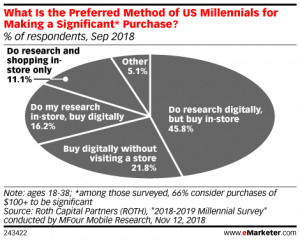The doctor-patient relationship has fundamentally shifted from a “sage on the stage” view, to doctors being more of “a guide on the side” – a second opinion.
Doctors have lost ground to the internet and social media. Consumers have become their own physicians. And healthcare, as we know it is dramatically changing.
What’s behind the disruption of the doctor-patient relationship?
Health consumerism.
When you examine not just why this shift has occurred but how it has happened, it becomes clear that health consumerism is here to stay.
And health brands stand to profit the most because of these nine dynamic drivers.
- Undoctoring. Consumers are no longer turning to medical providers for answers. With 64% of patients skipping medical care, they’re taking their health into their own hands and finding ways to cut the physician out of their healthcare regimen.
- Self Diagnosis. From search engines to online forums, consumers can research their symptoms and find alternative treatments, all without stepping foot in the doctor’s office. At best, the doctor has become a second opinion.
- Medical Shopping. In large part due to increased access to transparent medical pricing, consumers are forcing the healthcare industry to shift to a higher-quality, lower-cost model. Who will be the businesses that thrive in this price war-driven market? Those with economies of scale and who can offer immense value, convenient healthcare options – for less.
- Elite Fitness. Consumers are seeking active lifestyles to manage their health outcomes. With the emergence of workout trends and products such as CrossFit and Peloton, healthier consumers are looking away from traditional medicine and toward direct-to-consumer health brands to support their fitness goals.
- Alternatives & Substitutes. The days of a one-size-fits-all marketing model are long gone. Nearly every industry has seen a boom in small, niche businesses that offer consumers trusted alternatives to what’s available to the mainstream. And mass marketing to get sales won’t work either as consumers are lured to brands that speak directly to their interests.
- Clean Eating. Less than 1 out of 3 consumers trust food manufacturers. Coupled with the growth of food allergies, fast and cheap food options have been replaced with high-end and healthy. The result? Healthy living lifestyles will redefine what and how consumers buy (and what they’ll be willing to eat).
- Applification. In today’s on-demand landscape, doctors just can’t compete with the speed and sheer volume of information that technology can provide consumers. From apps that can detect subtle heart irregularities to apps that can help you manage your weight, doctors are now a “worst-case scenario” option.
- User Experience. Convenience has become the key differentiator. And consumers demand nothing less. In a market full of commodities, only those businesses that can stand out by their service will have a fighting chance to survive. In the new world of Amazon, if doctors aren’t providing ultra-high service, they’ll be replaced with an alternative that will.
- Insurance Chaos. Wellness is now a luxury for most adult consumers, and they expect high value for every dollar they spend. Medical providers can no longer rely on their credentials to attract patients. Instead, they must find ways to compete in a highly-fragmented and online review-conscious market.
With the power permanently placed in the hands of the consumer, the medical provider and patient relationship has morphed into a high-stakes negotiation. Consumers will demand better service. Consumers will expect high-value at affordable prices. Consumers will have access to the information they need to make informed decisions. And they’re not looking only at doctors to manage their health.
Also Read: Top Ways Health Organizations Improve the Customer Experience
The Boom of the Health Brand
The empowered health consumer knows one thing: they have the upper hand. Though this will rewrite the doctor-patient relationship, it ushers in a wave of opportunities for direct-to-consumer health brands, especially for the growing $600 billion Millennial market.
Your key differentiator will be in how you position your health brand to seamlessly fit into their lifestyle and purchasing process – and how you market directly to them. Brands that can leverage digital marketing to tap into the consumer’s mass desire and impulse to seek health without going to the doctor will be the new industry leaders.

